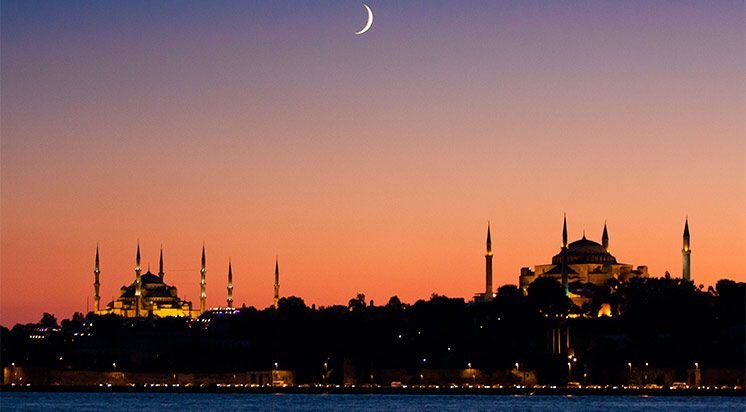
Here’s a fifth installment from an article that I wrote for Richard C. Martin, et al., eds., Encyclopedia of Islam and the Muslim World, 2 vols. (New York: Macmillan Reference USA, 2004), on the subject of “Muslim Identity”:
A disastrous war with Russia nearly ended the Ottoman state in 1877, and the difficult negotiations that ensued continued until 1882. Ultimately, the Ottomans surrendered large territories to Russia, the Balkan states, and other powers. These territorial losses, which cost the sultan many of his Christian subjects and precipitated a substantial immigration of Muslims from Russia and the Balkans into the remaining Ottoman lands, left the empire overwhelmingly Muslim. Seen by many Muslims as an episode in the battle between the dar al-islam and the dar al-harb, the crisis inflamed religious sentiments and, by the century’s end, inspired a yet more insistent Muslim nationalism—before which the ambivalent and never very popular “Ottomanism” quickly gave way.
Attempting to cope, Abdülhamid II (r. 1876-1909) concentrated government investments and reforms in the predominantly Muslim parts of the empire. He emphasized Islam as a basis of internal social and political stability and solidarity, further stressing his authority not merely as sultan but as caliph in a bid simultaneously to neutralize opposition from the varied Muslim ethnicities within his dominions and to mobilize support, when needed, among Muslims beyond his borders. Although he affirmed the principle of legal equality for minority religions, he felt that Muslims were the only truly loyal Ottoman subjects. (Under the circumstances, by and large, he may have been correct.) For this reason, pan-Islamists like al-Afghani regarded Abdülhamid as a symbol of Islamic solidarity and cohesion.
By the opening of the twentieth century, however, nationalistic movements in and about the Ottoman empire had destroyed more than the idea of political unity between Muslims, Christians, and others. With the imperial regime in Istanbul looking increasingly helpless both domestically and in foreign affairs, separate nationalistic movements arose even among Muslims—which severely undermined Abdülhamid II’s appeal to Islamic solidarity. As various non-Turkic peoples sought to dissolve their ties to the sultanate and to forge their own destiny, even Ottoman intellectuals became aware of the pre-Islamic history of the Turks and, at least partially on that basis, created a distinctively Turkish nationalism. At the same time, centralizing, industrialized European nation-states—very foreign to the reality in which they found themselves—became the ideal among the Ottoman elite. Consequently, when the Young Turk revolution occurred in 1908, it was strongly pro-Turkic, devoted to a centralizing and secularizing vision.
Mustafa Kemal Atatürk’s famous and more lastingly significant political involvement began in terms of Ottomanism, and, early on, he tended to speak in pan-Islamic terms. His conversion to Turkish nationalism was accelerated by the disastrous 1912-1913 Balkan War, but, although he is associated with secularism, there is no evidence that he ever sought to attack Islam. Atatürk’s notable successes garnered immense prestige for the secular nationalism he came to espouse, which has assured its dominant role in Turkey into the twenty-first century.
That last line, of course, has been problematized since 2003 by the increasingly aggressive and autocratic Islamism of the former Turkish prime minister and current Turkish president Recep Tayyip Erdoğan.
Posted from Ucluelet, British Columbia










